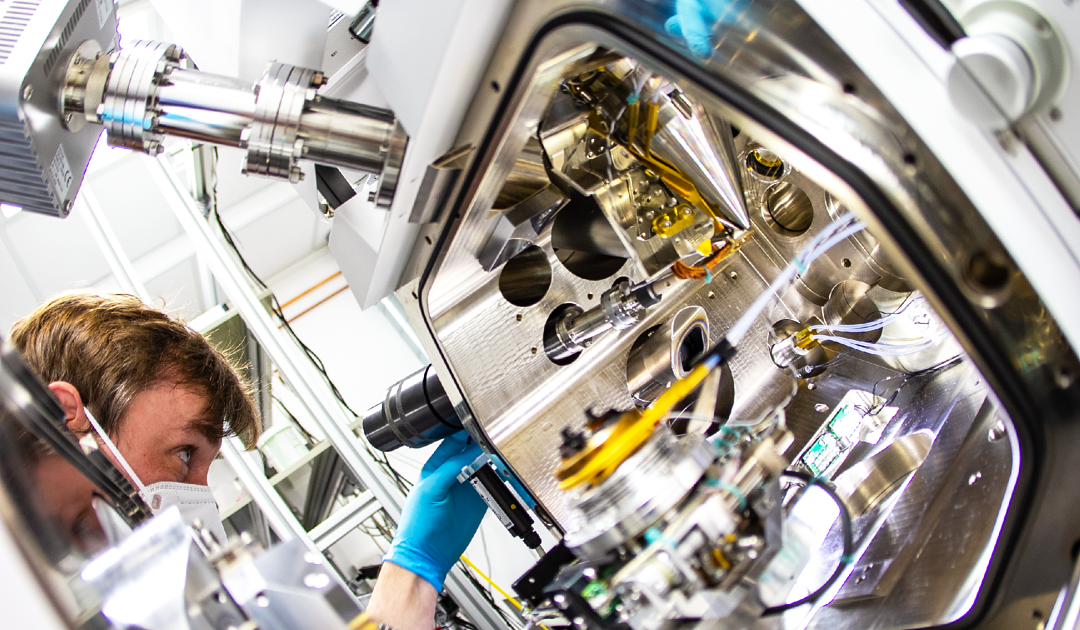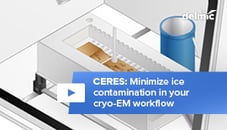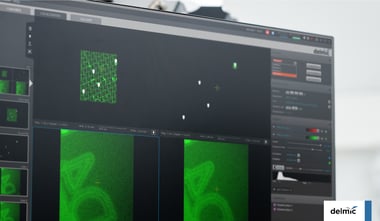The Cryo Workflow Tools are aimed at reducing ice contamination, a major obstacle in the cryo electron tomography (cryo-ET) workflow. The new product with the name “Delmic CERES Ice Defence System” will be launched in March 2021. It will help increase accessibility of cryo electron tomography and simplify the acquisition of new knowledge in life sciences.
In comparison to the conventional light microscopy, cryo electron tomography is a powerful tool that offers much deeper insights into the cell structure by unveiling high-resolution 3D views of biological samples such as large macromolecules. In the first step, samples are immobilized by high-speed freezing at extreme temperatures under −150 °C. These cryogenic conditions make it possible to study samples without chemical fixation or dehydration, thereby preventing distortion or disruption of biological structures of the sample. However, the preparation and the handling of the samples are very complex, since the formation of crystalline ice can compromise the structural integrity of the specimen. Sebastian Tacke and colleagues from the MPI in Dortmund developed an innovative cryo-ET technology, which is now commercialized by the Dutch company Delmic, who specialize in offering solutions for light and electron microscopy. The new set of powerful cryo solutions is aimed to simplify and bring efficiency in the preparation phase involving cryo-ET samples.
Video: sample preparation for Cryo-EM applications in glove box (CERES Clean Station) developed at the MPI. Glove box with cryo preparation station prevents ice contamination due to infinitesimal humidity.
The Cryo Workflow Tools will be known commercially as the CERES Ice Defence System. Used together or individually, the anti-contaminator, glove box and high vacuum cryo transfer (HVCT) are aimed to minimize ice contamination during lamella preparation. The Anti-contaminator (CERES Ice Shield) consists of a cryo shutter that is cooled by liquid nitrogen. It provides a colder surface within close proximity to the cryo sample and prevents any residual moisture in the chamber to condense on the sample and therefore drastically reduces undesirable ice formation on the sample. The glove box (CERES Clean Station) can be used to prepare the cryogenically frozen samples for cryo-FIB (Focused Ion Beam) and for cryo-TEM (Transmission Electron Microscopy) with minimal ice contamination thanks to a less than 1% humidity environment. The high vacuum cryo transfer (CERES Vitri-Lock) is designed to transfer samples at high vacuum between the preparation station to the cryo SEM (Scanning Electron Microscope) to minimize ice contamination during the transfer. The CERES Ice Defence System has already been sold to several research groups and will now officially be launched in March 2021.
Dr. Katherine Lau, Business Unit Owner at Delmic Cryo:
“We are very excited to partner with the Max Planck Institute to make these innovative tools available to researchers in the cryo-EM field. The tools fit perfectly with our company mission, which is to make the world a healthier place by increasing the ease of obtaining powerful insight into the building blocks of life through cryo-ET”.
Prof. Dr. Stefan Raunser, director at the Max Planck Institute of Molecular Physiology.
“This fruitful collaboration of academia and industry is an example par excellence of how basic research can be transferred into the development of innovative technologies, improving the gain of new knowledge in life sciences and beyond. This technology transfer would not have been possible in this way without the important work of Max Planck Innovation"
Dr. Ingrid Kapser-Fischer, patent- and licensing manager at Max Planck Innovation, the technology transfer organization of the Max Planck Society:
“With Delmic we have found an innovation-driven company that offers high-performance microscopy solutions for research. The invention of the MPI for Molecular Physiology fits in perfectly with Delmic's product portfolio and will further simplify cryo-ET research to get a better understanding of organisms in the future. We are glad about the partnership and look forward to the product launch”.
About the research of Prof. Dr. Stefan Raunser at the MPI
The Raunser Department studies structural and functional studies of macromolecular protein complexes. The main focus is on important biological questions concerning processes at or in the cell membrane, the molecular details of muscle contraction and the mechanisms of action of bacterial toxin complexes. Structural analysis of protein complexes are mainly performed by cryo electron microscopy. Larger biological samples, such as muscle tissue, are examined by cryo electron tomography.
About Max Planck Innovation
As the technology transfer organization of the Max Planck Society, Max Planck Innovation is the link between industry and basic research. The interdisciplinary team advises and supports scientists at the Max Planck Institutes in evaluating inventions, filing patents and starting businesses. They offer industry central access to the innovations of the Max Planck Institutes, therefore fulfilling an important task: the transfer of results from basic research into commercially and socially useful products. Further information can be found at www.max-planck-innovation.com
To download the pdf version of this press release, please follow this link.
Photo: Dr. Sebastian Tacke working at the modified Cryo-FIB Aquilos (ThermoFisher Scientific). A newly developed cryo anti-contaminator (CERES Ice Shield) consists of a cryo shutter which protects the sample from ice contamination and thereby improves preparation of the sample by the ion-beam. Samples are transferred to cryo SEM by high vacuum cryo transfer (CERES Virti-lock).
This work is supported by the European SME2 grant № 879673
.png)








